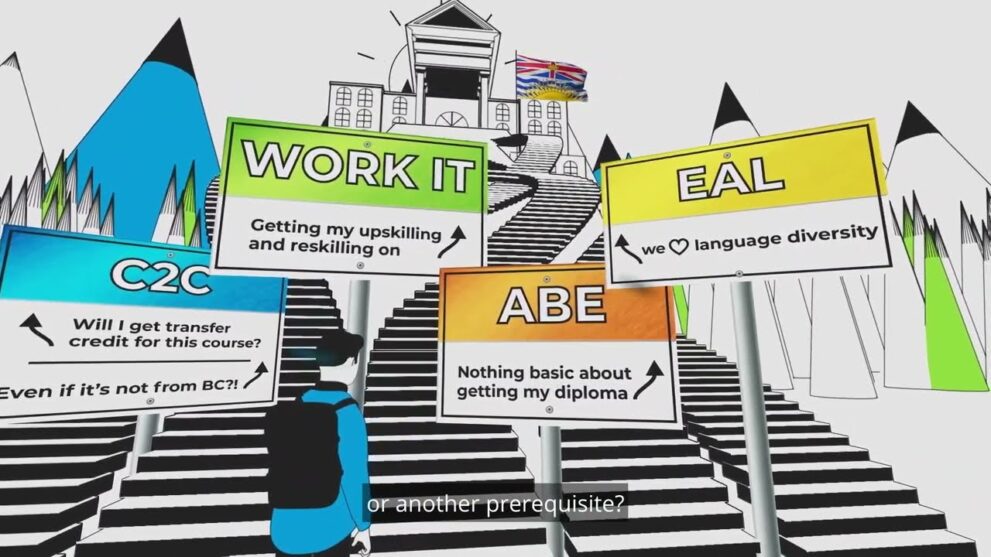
The BC Transfer Guide is a resource designed for students in British Columbia, Canada, who are interested in pursuing post-secondary education. It provides information about the transferability of courses between different institutions, including universities, colleges, and institutes.
The guide helps students determine which courses they need to take at their current institution in order to transfer to another institution and complete their program of study. It also provides information on admission requirements, course prerequisites, and credit transfer policies, making it easier for students to plan their academic pathways and achieve their educational goals.
The BC Transfer Guide is published by the British Columbia Council on Admissions and Transfer (BCCAT). BCCAT is a non-profit organization that works to facilitate the transfer of credits and credentials among the post-secondary institutions in British Columbia. They provide leadership and expertise on transfer and admissions practices, and support the development of policies and procedures that promote student mobility and access to higher education.
How to use BC Transfer Guide
The BC Transfer Guide is an online tool that helps students transfer credits between different post-secondary institutions in British Columbia, Canada. To use the guide, you can follow these steps:
- Visit the BC Transfer Guide website.
- Select the institution you are transferring from and the institution you are transferring to.
- Choose the program or subject you are interested in transferring credits for.
- Review the information provided, including the transferability of credits, the number of credits that can be transferred, and any specific requirements or conditions.
- If you are satisfied with the information, you can initiate the transfer process with the relevant institutions.
It is important to note that the BC Transfer Guide is not a comprehensive list of all transferable courses or programs, and it is always recommended to confirm with the receiving institution about their specific transfer policies and procedures.
ON to BC Transfer Credit
The BC Transfer Guide is a tool designed to help students in British Columbia transfer credits from one institution to another within the province. If you are looking to transfer from an institution outside of British Columbia, the BC Transfer Guide may not be applicable. However, if you are transferring from an Ontario institution to a BC institution, you may still be able to use the BC Transfer Guide to help determine how your credits may transfer. It’s recommended that you check with the specific institutions you are transferring between to determine their specific transfer policies and procedures.
What does 1xxx mean on the BC Transfer Guide?
In the BC Transfer Guide, the code “1xxx” is used to indicate a university-level course that is transferable to a BC institution, but for which there is no direct equivalent course offered at the receiving institution. The “1” in “1xxx” represents the level of the course (first-year), while the “xxx” indicates that the specific course number is not important for the transferability of the course. Instead, the course is evaluated based on its learning outcomes, content, and level of difficulty to ensure that it meets the requirements of the receiving institution’s program or degree.
What does 2xxx mean in the BC Transfer Guide?
In the BC Transfer Guide, courses with a course code that starts with “2” (e.g., 2XXX) are typically second-year university courses that may transfer to other institutions or be recognized for credit at the receiving institution. These courses are generally more specialized and build on the foundational knowledge and skills developed in first-year courses. Depending on the program and institution, completion of certain 2xxx-level courses may be a requirement for graduation.
What does exempt from mean on the BC Transfer Guide?
In the BC Transfer Guide, “exempt” refers to courses that are not directly equivalent to courses at other institutions. These courses may not transfer in the same way as courses that are considered equivalent, but they may still be recognized by institutions as fulfilling certain requirements or prerequisites. Exempt courses may be subject to further review by the receiving institution to determine how they can be used towards a program of study.
What is a “block transfer” in the BC Transfer Guide?
A block transfer is a process in the BC Transfer Guide that recognizes a group of courses from one institution as equivalent to a set of courses at another institution. Block transfers are used when a group of courses from one institution has been identified as being equivalent in content to a set of courses at another institution, but the courses may not have exact course-by-course equivalencies. This recognition allows students to transfer a group of courses as a block instead of having to transfer each course individually. Block transfer agreements are established between institutions to provide students with a clear pathway to transfer between programs and institutions.
What is a degree partnership in the BC transfer guide?
A Degree Partnership is an agreement between two or more institutions to provide a pathway for students to complete a degree. The partnership allows students to take courses at one institution and have them count towards a degree at another institution. In the BC Transfer Guide, a Degree Partnership is listed as a specific type of transfer agreement, where a student can transfer between institutions in a partnership and receive credit for their courses towards their degree. This allows students to have greater flexibility in their education and can save them time and money by reducing the number of courses they need to take to complete their degree.
What is “course to course” in the BC Transfer Guide?
In the BC Transfer Guide, “course to course” refers to the process of transferring individual courses from one post-secondary institution to another. This means that if a student has taken a course at one institution, they can transfer that course to another institution to meet a similar course requirement in their program of study. The BC Transfer Guide provides information on which courses are eligible for transfer between institutions, and how the transfer process works. This allows students to maximize the credit they receive for courses completed at other institutions and reduce the time and cost required to complete their degree




 Share
Share Tweet
Tweet Share
Share




Comment